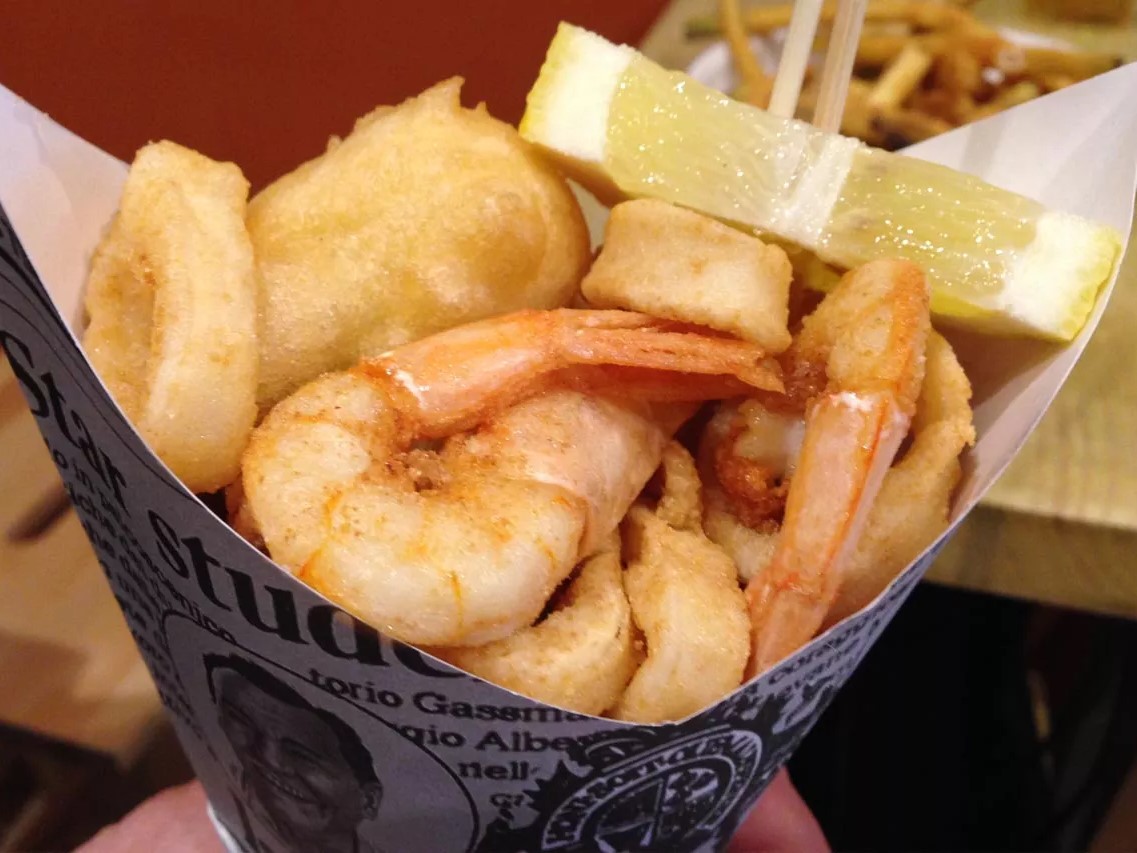
 We the Italians Editorial Staff
We the Italians Editorial Staff
Italian street food: How can one resist the street food of Naples?
- WTI Magazine #187 May 17, 2025
-

 We the Italians Editorial Staff
We the Italians Editorial Staff
I’m not sure if street food was invented in Naples, but sometimes I feel like everything was invented in this extraordinary city. One thing is certain: it’s here where some incredible flavors have always been enjoyed in the streets of the Neapolitan neighborhoods, where life is still vibrant, wonderful, and delicious.
Exploring Campania means diving into a region rich in history and culture, where the culinary experience is as significant as the scenic beauty, with food trucks and shops on every corner. How can one resist the street food of Naples?
The Cuoppo
History tells us that the poorer Neapolitans would buy small fish from fishermen, frying them to intensify their flavor. Known as "oggi a otto" (eight days), it was sold on credit, to be paid back within 8 days. The cuoppo, with its cone-shaped packaging, contains a variety of fried foods, meant to be eaten dry to maintain their crispiness. The "di terra" cuoppo contains fried pasta, mozzarella balls, and potato croquettes, while the seafood version is filled with fried squid, cuttlefish, cod, and anchovies.
Pizza: a portafoglio, fritta and montanara
The pizza a portafoglio, a symbol of Neapolitan culinary tradition, dates back to the Greco-Roman period. It is a more compact version, folded in four for eating while standing. The pizza fritta is usually stuffed with tomato, mozzarella, ricotta, and pork cracklings. The montanara, on the other hand, is inspired by mountain farmers. It is a softer fried pizza, topped with tomato sauce, parmesan, and DOP mozzarella.
The Zeppulelle di pasta cresciuta
Zeppulelle di pasta cresciuta feature a dough similar to pizza but more liquid. Filled with anchovies or vegetables like zucchini flowers, they become irresistible, especially when placed in the cuoppo. The ancestor of pasta cresciuta is mentioned by poet Giovan Battista del Tufo in the 16th century, as zeppole made from leavened dough and covered in honey. Over time, sweet zeppole gave way to savory ones, gaining a special place in the cuoppo. The preparation is simple: dissolve a block of brewer’s yeast in warm water, add salt and flour. The soft dough rises for about 90 minutes, then is fried in spoonfuls in hot oil.
The Panuozzo
The panuozzo originated in Gragnano, a town in Naples known as the "City of Pasta." It represents a tasty middle ground for those undecided between pizza and a sandwich. Made with pizza dough, it is cooked in a wood-fired oven, then topped and cooked a second time. In the 1980s, Gragnano had fewer than ten pizzerias, but the advent of panuozzo brought a significant influx of customers.
O Pere e 'O Musso
The name "O Pere e 'O Musso" means "the foot and the muzzle" and refers to two cuts of meat from the carnacottaro, an ancient offal seller. The Neapolitan term “zendraglie” has French origins, referring to the scraps once considered inedible by the nobility and often carrying a derogatory tone towards the lower classes. Today, this specialty is available in butcher shops or from street vendors. You can choose from various cuts, including pig's foot (or veal), veal's muzzle, tripe, centopelle (one of the veal’s stomachs), pig's tongue, veal and pig matrices, o'mbruglitiello (veal intestines), and 'a zizza (cow's udder). It has long represented the symbol of poor cuisine, prepared in the courtyards of the Campanian cities. It is consumed year-round but is especially appreciated in summer as a cold dish.
The Tarallo
The etymology of the word "tarallo," the quintessential snack, is debated. Some suggest it comes from the Latin "torrere" (to roast) or the French "toral" (dryer). The more credible origin seems to be Latin, defining the tarallo as a dough mixed with pepper, enriched with shelled almonds and baked. Another simpler theory suggests the name comes from "danal" (pain rond, round bread) from across the Alps. The tarallo sugna e pepe, typical of the Neapolitan tradition, dates back to the late 18th century. This delicacy arose from the need to recover leftover leavened dough, enriched with lard, pepper, and creativity. Bakers used the leftover dough sparingly to create this savory snack. "Tarallari" street vendors, with baskets on their shoulders, sold them on the streets.